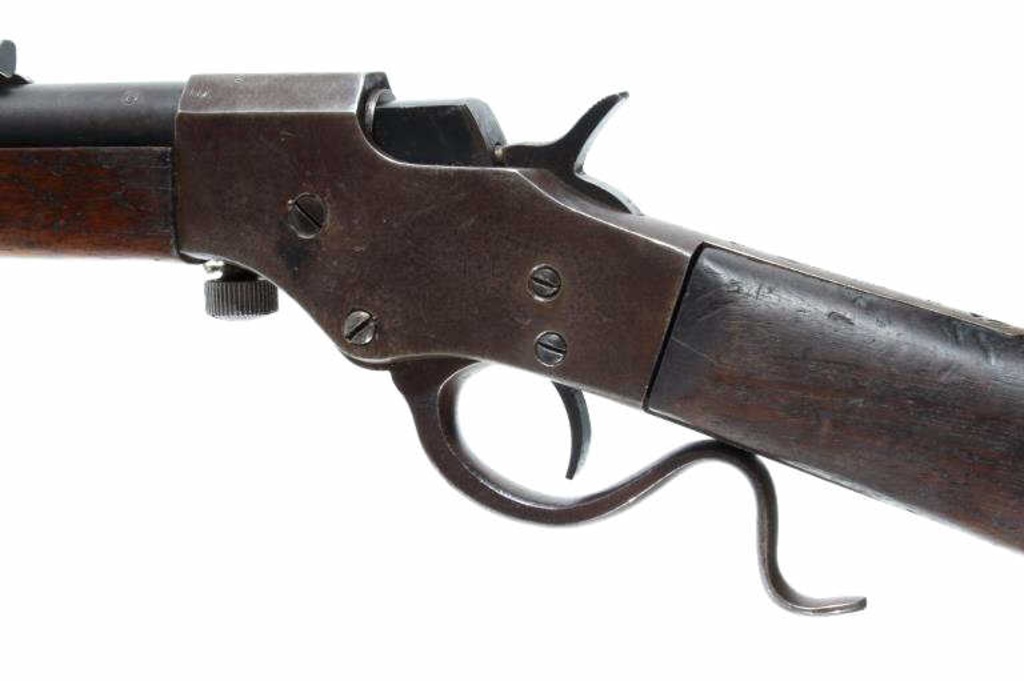

In 1880, the company began making falling block rifles. 25-25 would be used in Stevens' model 44 and the model 44½ rifles manufactured from 1903. (This is an odd reversal of the relationship of the. 25-21 Stevens was essentially a shortened version of the company's own. The unpopularity of the bottlenecked case led Stevens to develop the. Īs several manufacturers would later do with other wildcats, Stevens adopted the.
J stevens favorite 22 rifle crack#
25 Stevens Short, designed as competitors, and offered in models such as the lever action single-shot Favorite (produced between 18) and the Crack Shot #15 (introduced in 1900). 22 LR would outperform other Stevens rounds, such as the. 22LR cartridge was available beginning in 1888, in the #1, #2, #9, and #10 break-top rifles, and in their New Model Pocket and Bicycle rifles. 22 LR round, which served as an introductory caliber for children for decades, as well as being very popular for plinking, varmint and target shooting. Vista said it will use this money, after paying associated taxes, to reduce its debt. Vista received immediate gross proceeds of $158 million and a $12-million five-year note. On July 9, 2019, Vista Outdoor completed the sale of Savage Arms and Stevens Arms for $170 million to a group of investors led by Savage's management. This merger made Savage the largest producer of arms in the United States at the time. Stevens was purchased by the Savage Arms Company on April 1, 1920, with Stevens operating as a subsidiary of Savage but in a semi-independent status until 1942. Government and keep the Stevens firearms facility operational and did return to limited production of civilian firearms between 19 while looking for a buyer for Stevens. They managed to sell most of the rifles to the U.S. When the Bolsheviks deposed the Czar in 1917, New England Westinghouse was never paid, and it fell into financial distress. After the purchase, they sold off the tool making division, halted production of Stevens-Duryea automobiles, and, on July 1, 1916, renamed the firearms division the J. They needed a firearms manufacturing facility to accomplish this and chose Stevens. New England Westinghouse was created specifically to fulfill a contract to produce 1.8 million Mosin-Nagant rifles for Czar Nicholas II of Russia for use in World War I. On May 28, 1915, New England Westinghouse, a division of Westinghouse Electric, purchased Stevens. arms business in target and small game guns.


Frank Duryea to produce the Stevens-Duryea automobile manufactured at a separate facility also in Chicopee Falls. In 1901, Stevens entered into a partnership with J. Page led the company to significant growth, such that by 1902 Stevens had 900 employees and was considered one of the top sporting firearms manufacturers in the world. Page, who was one of the new partners and the bookkeeper. Stevens and Taylor were bought out in 1896 by I.H. The business was able to grow steadily with tool manufacturing and sales now accounting for the bulk of the business output. In 1886, the company was reorganized and incorporated as J. In 1883 they purchased the Massachusetts Arms Company which Joshua Stevens had helped found in 1850. By 1876 the company had recovered to the extent that it was then manufacturing twice the number of shotguns as it had been before that year. The Panic of 1873 had a further negative impact on sales. 1906 ad in the yearbook of West Virginia Universityīusiness was slow in 1870 when Stevens occupied a converted grist mill and had just sixty employees.


 0 kommentar(er)
0 kommentar(er)
